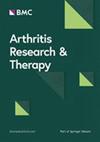nCD64指数作为成人发病still病巨噬细胞激活综合征新的早期预测生物标志物
IF 4.6
2区 医学
Q1 Medicine
引用次数: 0
摘要
巨噬细胞激活综合征(MAS)是成人发病斯蒂尔氏病(AOSD)的一种严重且可能危及生命的并发症,需要识别敏感和特异性的生物标志物进行早期诊断。我们的研究发现,与健康对照组相比,AOSD患者中性粒细胞中CD64 mRNA的表达显著升高(p = 0.029)。中性粒细胞CD64指数(nCD64指数)与脾肿大、喉咙痛、肺浸润、心包炎等关键临床表现呈正相关。有效治疗后nCD64指数迅速显著下降(p < 0.001)。这些发现表明,nCD64指数是早期识别有MAS风险的AOSD患者的一个有希望的生物标志物,有助于及时诊断和治疗。本文章由计算机程序翻译,如有差异,请以英文原文为准。
nCD64 index as a new early predictive biomarker for macrophage activation syndrome in adult-onset still’s disease
Macrophage activation syndrome (MAS) represents a severe and potentially life-threatening complication of adult-onset Still’s disease (AOSD), necessitating the identification of sensitive and specific biomarkers for early diagnosis. Our study found significantly elevated CD64 mRNA expression in neutrophils of AOSD patients compared to healthy controls (p = 0.029). The neutrophil CD64 index (nCD64 index) positively correlated with key clinical manifestations, including splenomegaly, sore throat, pulmonary infiltrates, and pericarditis. Effective treatments led to a rapid and significant decrease in the nCD64 index (p < 0.001). Logistic regression showed that an elevated nCD64 index is a risk factor for MAS (OR = 1.073, p = 0.003). ROC curve analysis indicated that the nCD64 index reliably distinguished AOSD patients with MAS (AUC = 0.877; cutoff = 32.09; p < 0.001) and combined utilization of nCD64 index, ferritin, and sIL-2R demonstrated a strong predictive value. Correlations with hospitalization length (r = 0.382, p < 0.001) and maximum glucocorticoid dose (r = 0.326, p = 0.003) were also observed. Kaplan-Meier analysis revealed a significantly higher cumulative incidence of MAS in patients with an nCD64 index > 32.09 (p < 0.001). These findings suggest the nCD64 index is a promising biomarker for early identifying AOSD patients at risk of MAS, aiding in timely diagnosis and management.
求助全文
通过发布文献求助,成功后即可免费获取论文全文。
去求助
来源期刊

Arthritis Research & Therapy
RHEUMATOLOGY-
CiteScore
8.60
自引率
2.00%
发文量
261
审稿时长
14 weeks
期刊介绍:
Established in 1999, Arthritis Research and Therapy is an international, open access, peer-reviewed journal, publishing original articles in the area of musculoskeletal research and therapy as well as, reviews, commentaries and reports. A major focus of the journal is on the immunologic processes leading to inflammation, damage and repair as they relate to autoimmune rheumatic and musculoskeletal conditions, and which inform the translation of this knowledge into advances in clinical care. Original basic, translational and clinical research is considered for publication along with results of early and late phase therapeutic trials, especially as they pertain to the underpinning science that informs clinical observations in interventional studies.
 求助内容:
求助内容: 应助结果提醒方式:
应助结果提醒方式:


